Robert Maillart
Schwandbachbrücke
1933
The first use of concrete as a major bridge construction material was in 1856. It was used to form a multiple-arch structure on the Grand Maître Aqueduct in France. The concrete was cast in its crudest form, a huge mass without reinforcement. Later in the nineteenth century, engineers explored the possibilities of reinforced concrete as a structural material. They found that the concrete carried compressive forces, while steel bars carried the tension forces. This made concrete a better material for structures.
Joseph Monier, from France, is credited with being the first to understand the principles of reinforced concrete. He embedded an iron-wire mesh into concrete. He was a gardener, not a licensed engineer, and sold his patents to contractors who built the first generation of reinforced concrete bridges in Europe. He also perfected the technique of pre-stressing concrete, which leaves permanent compressive stresses in concrete arches.
By the early twentieth century, reinforced concrete became an acceptable substitute in construction for all previous structural materials, such as stone, wood, and steel. People such as Monier had developed useful techniques for design and construction, but no one had created new forms that showed the full aesthetic nature of reinforced concrete.
Robert Maillart had an intuition and genius that exploited the aesthetic of concrete. He designed three-hinged arches in which the deck and the arch ribs were combined, to produce closely integrated structures that evolved into stiffened arches of very thin reinforced concrete and concrete slabs. The Salginatobel Bridge (1930) and Schwandbach Bridge (1933) are classic examples of Maillart’s three-hinged arch bridges and deck-stiffened arch bridges, respectively. They have been recognized for their elegance and their influence on the later design and engineering of bridges.
These designs went beyond the common boundaries of concrete design in Maillart’s time. Both of the bridges mentioned above are great examples of Maillart’s ability to simplify design in order to allow for maximum use of materials and to incorporate the natural beauty of the structure’s environment. Selected from among 19 entrants in a design competition in part because of the low cost of his proposal, Maillart began construction of the Salginatobal Bridge in Schiers, Switzerland in 1929; it opened on 13 August 1930.
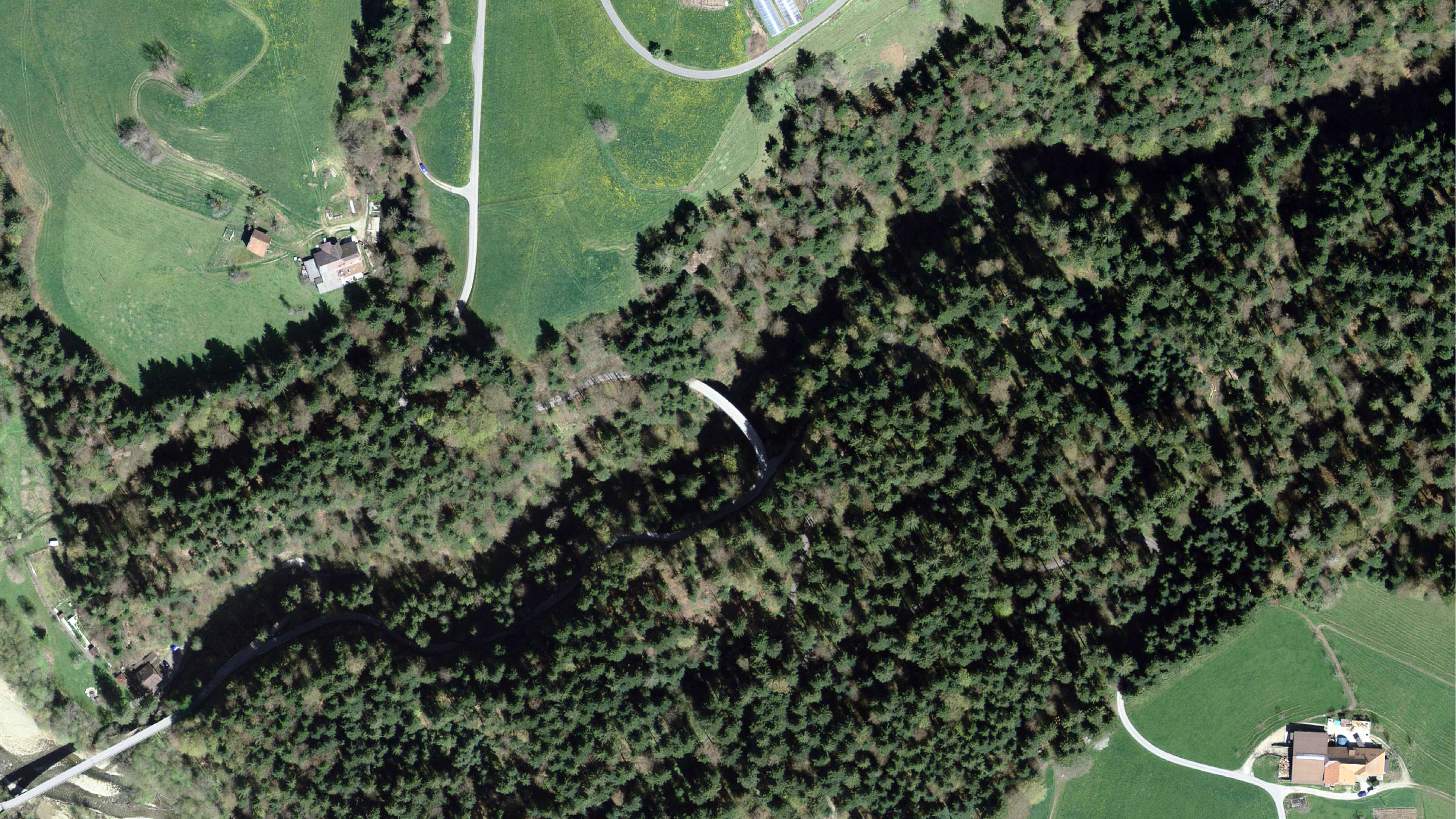
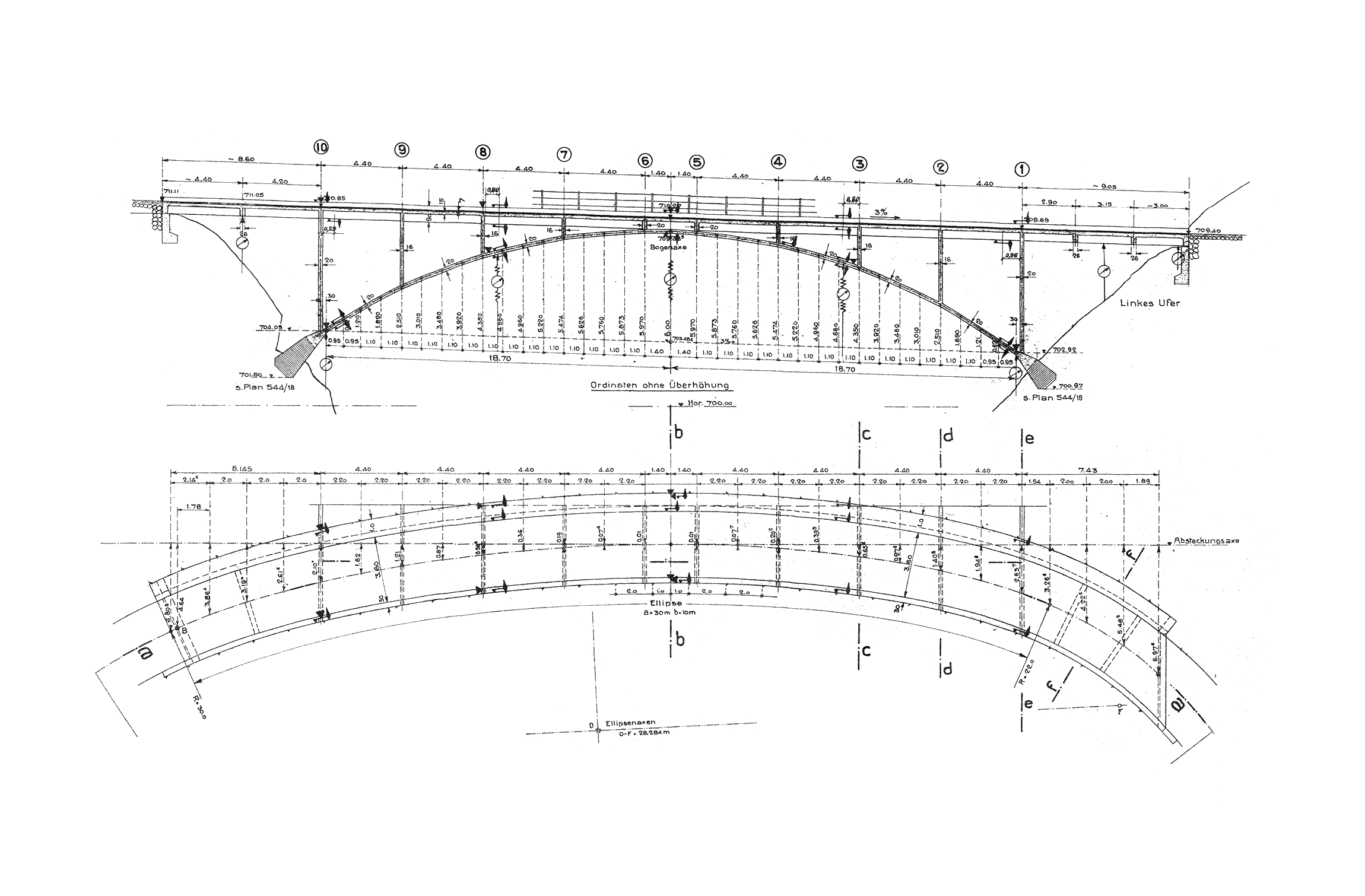
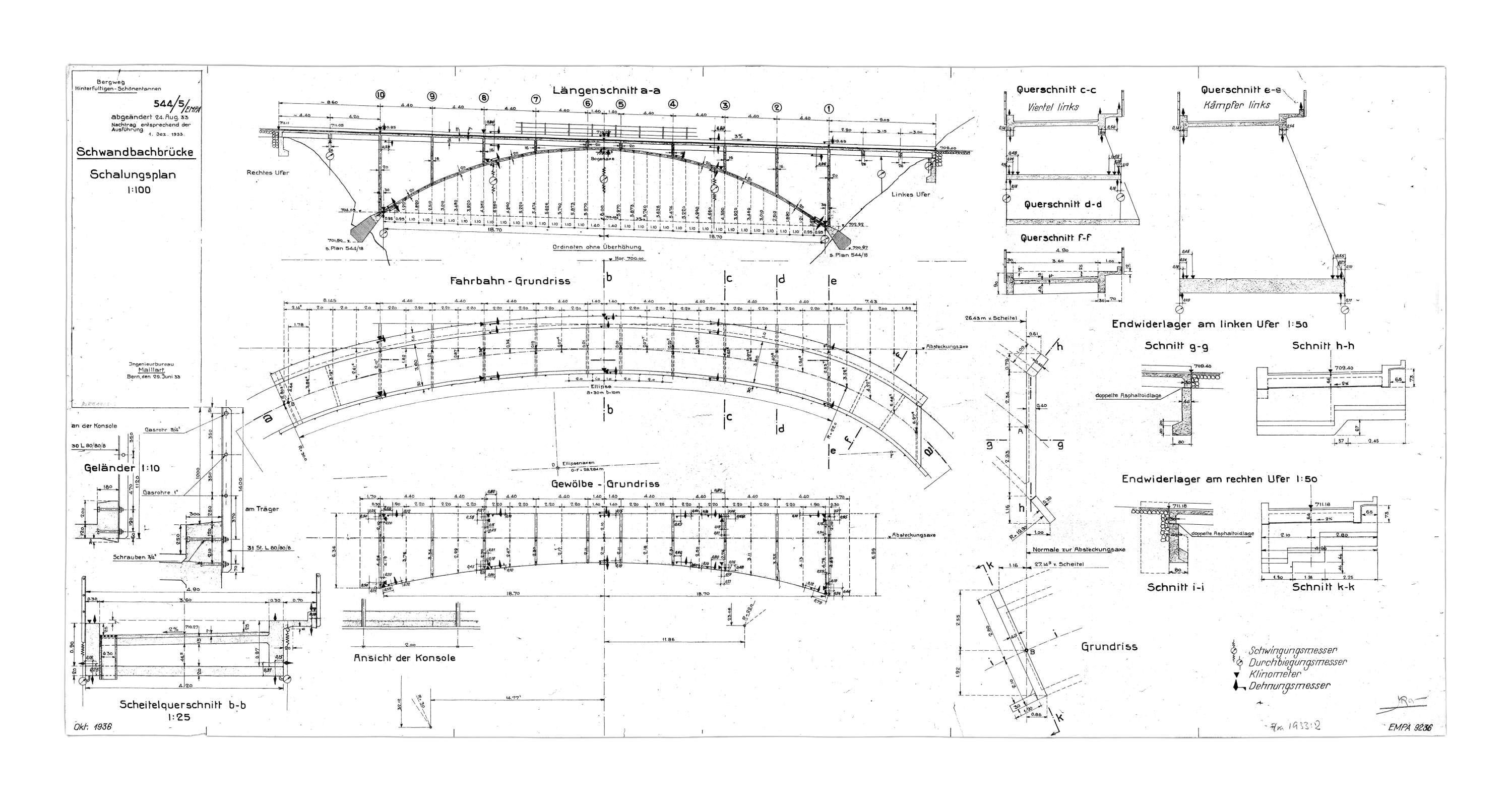
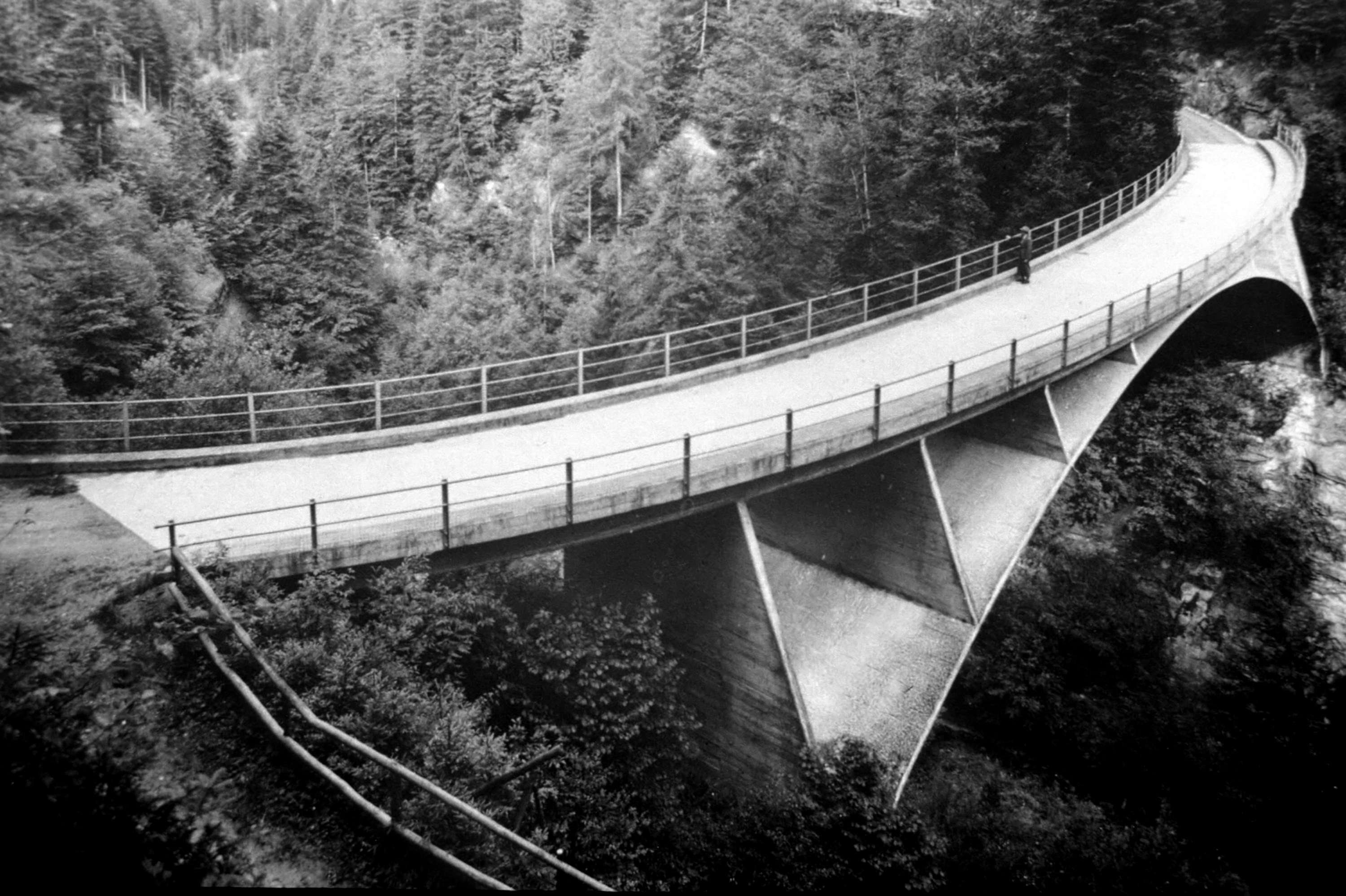
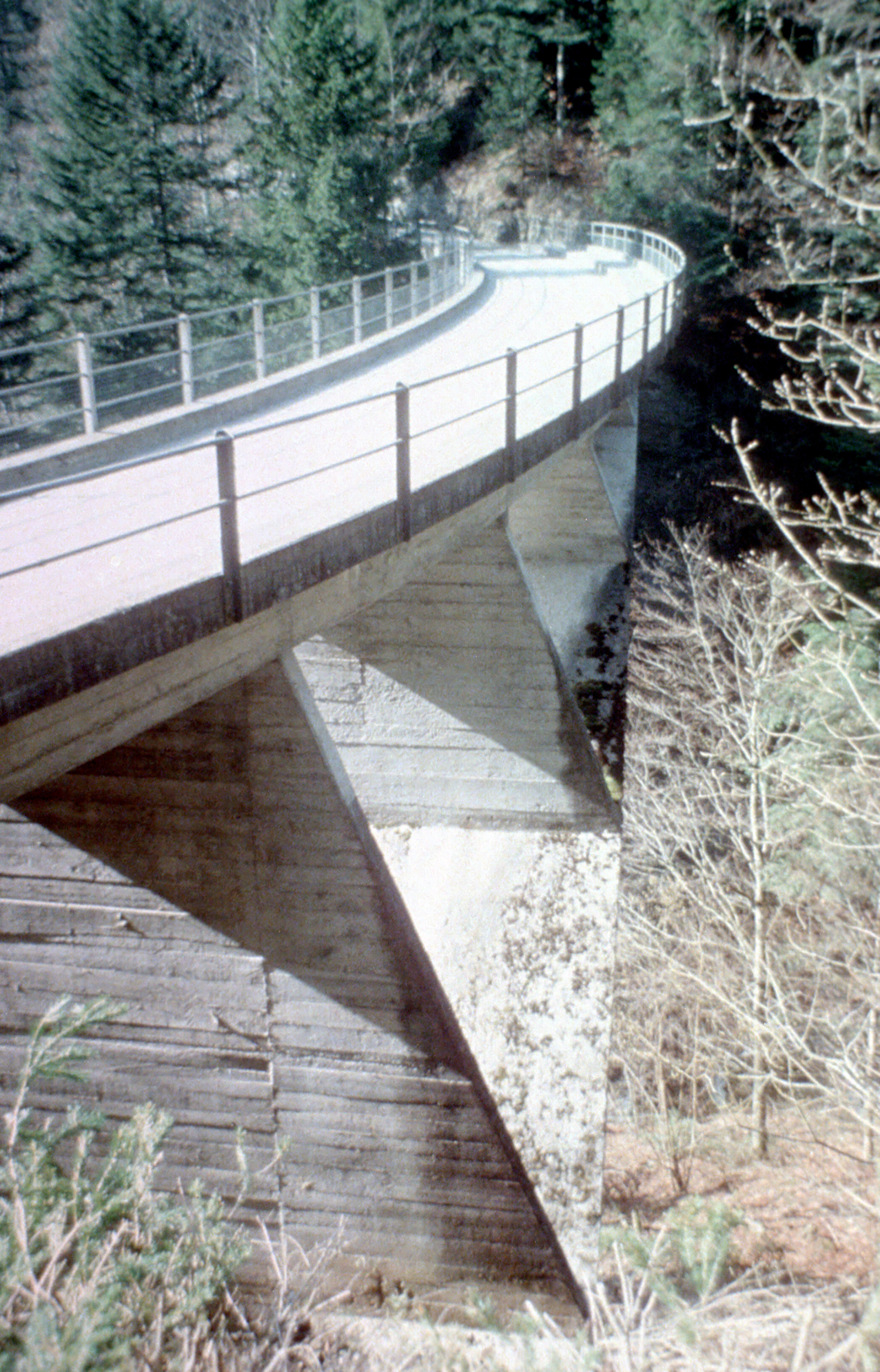
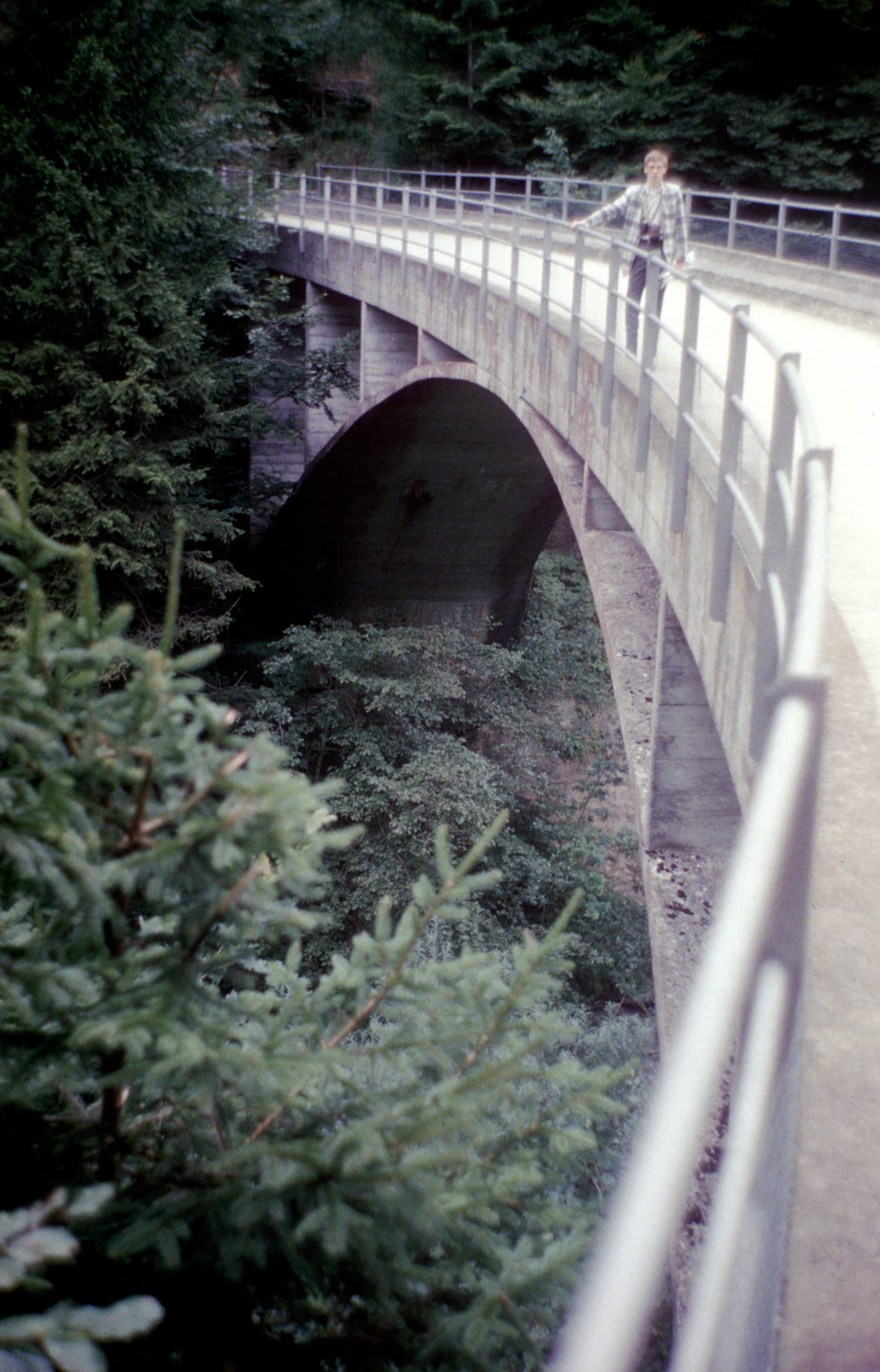
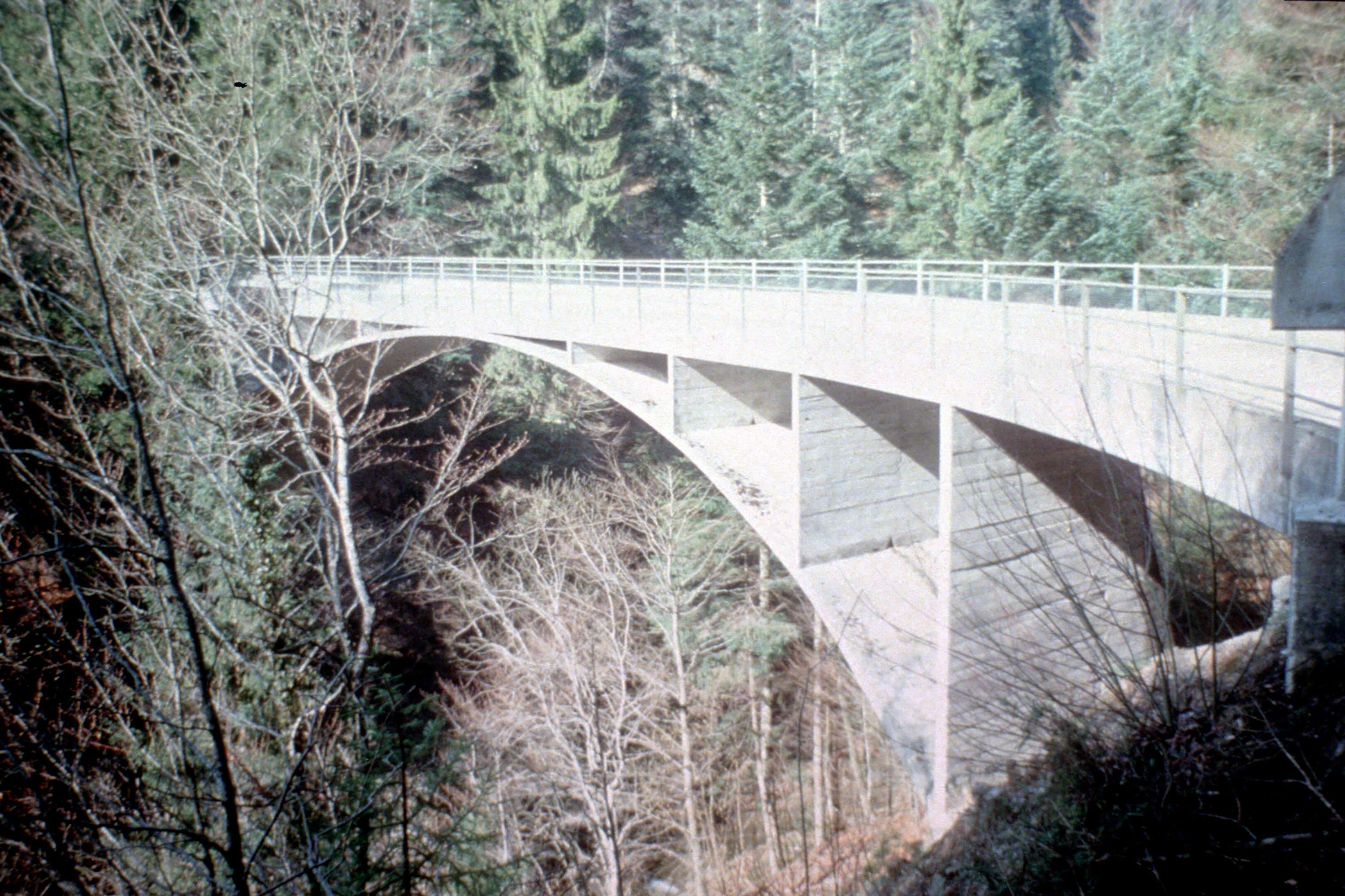
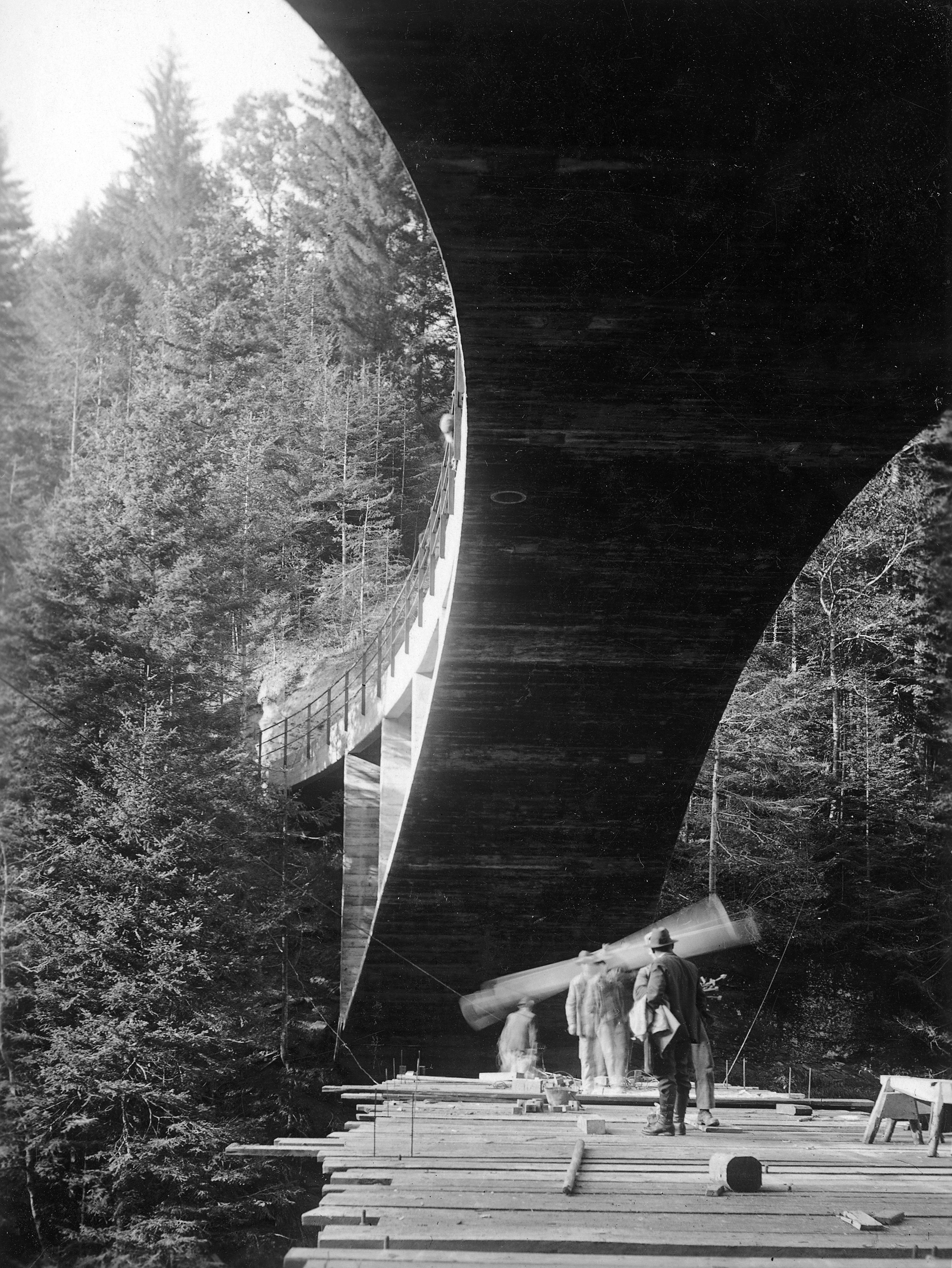
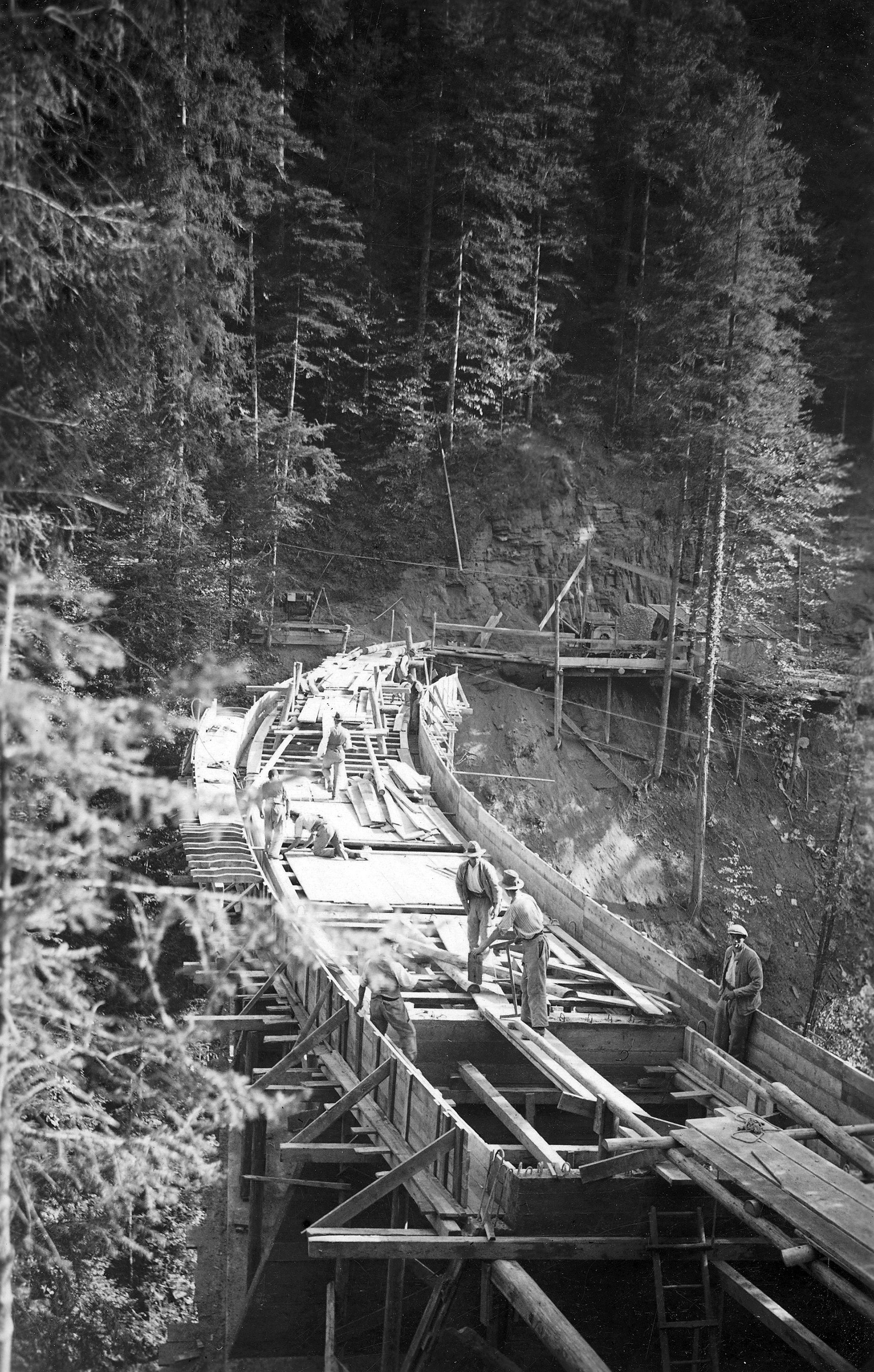
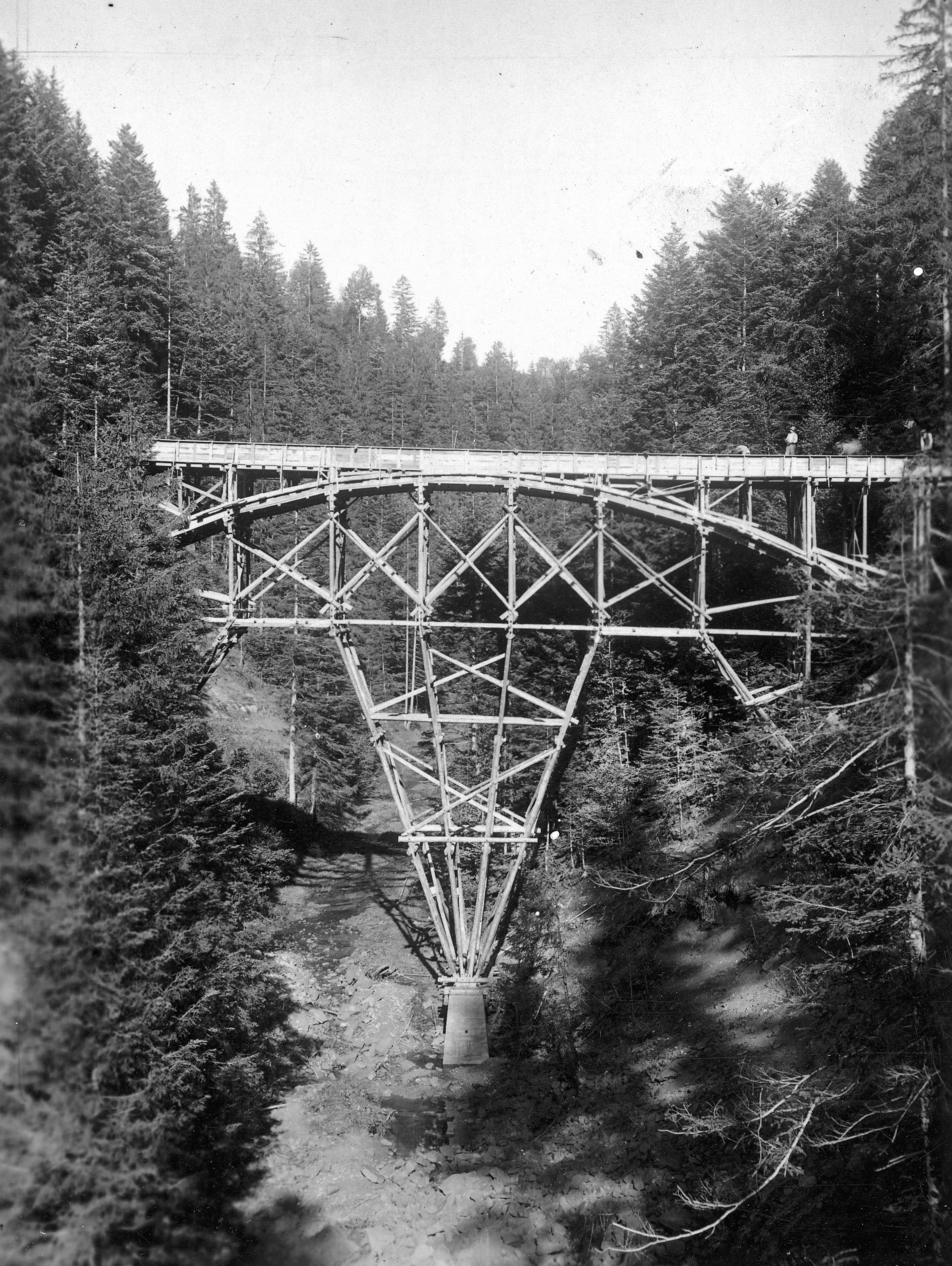
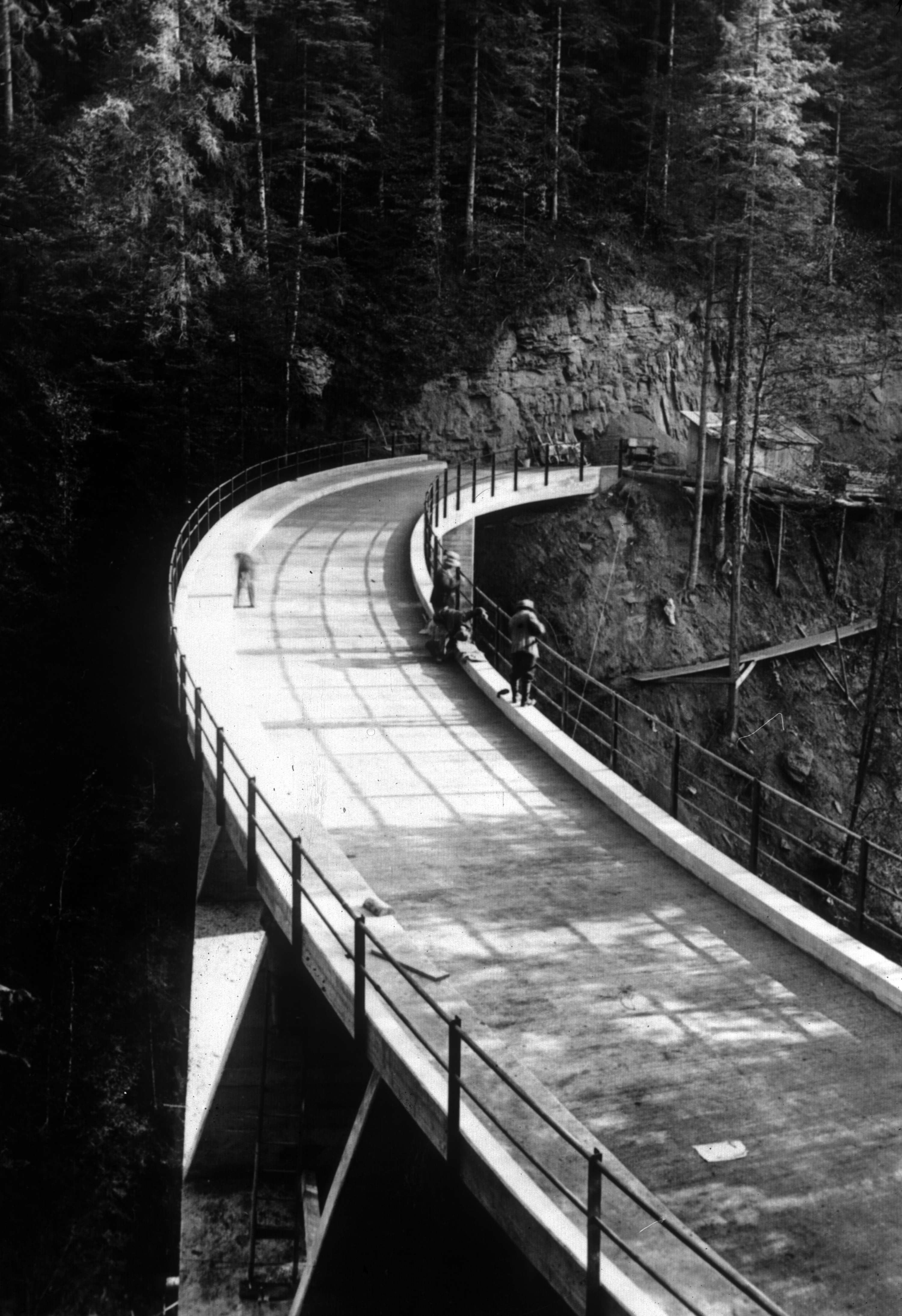
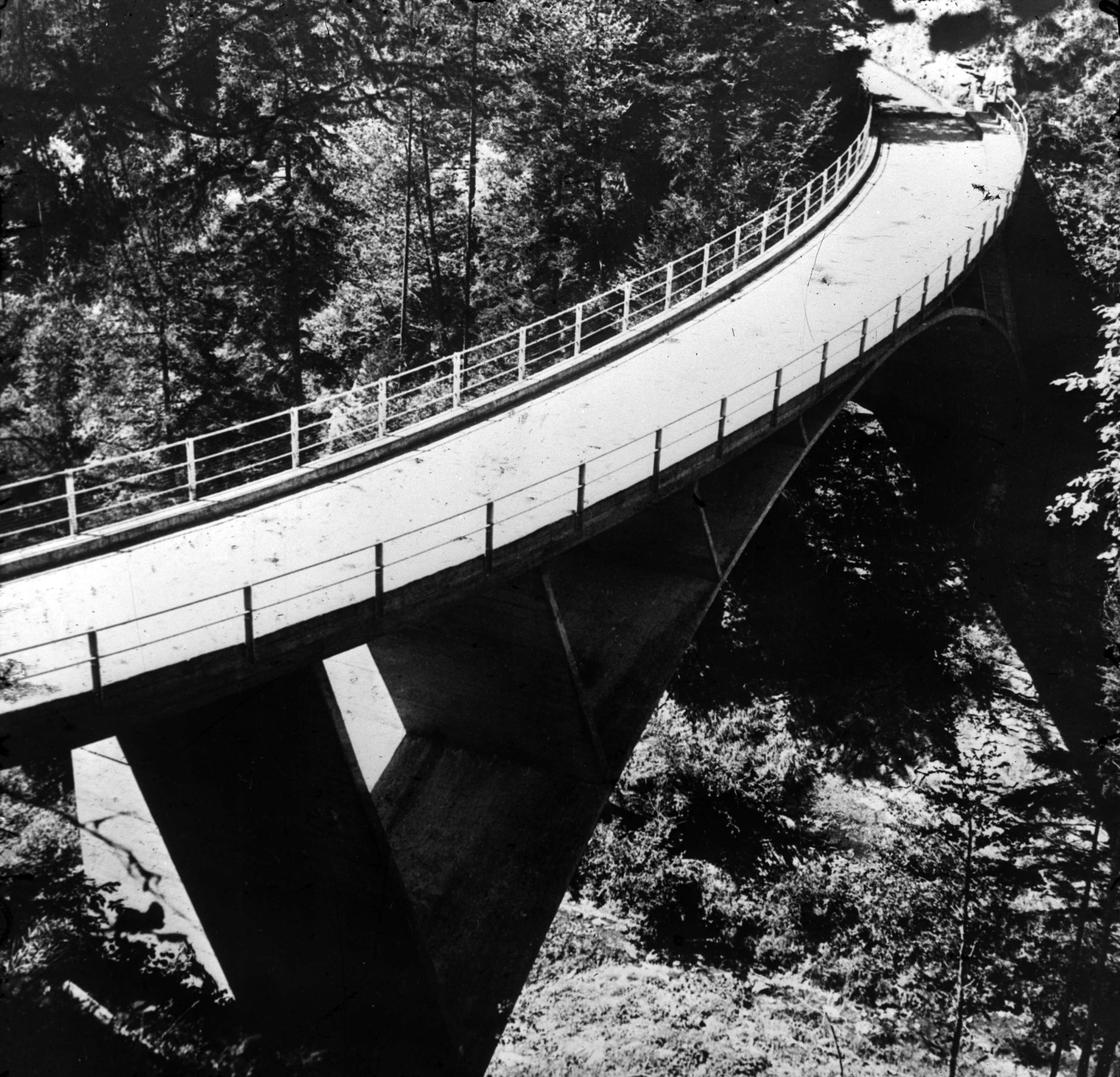
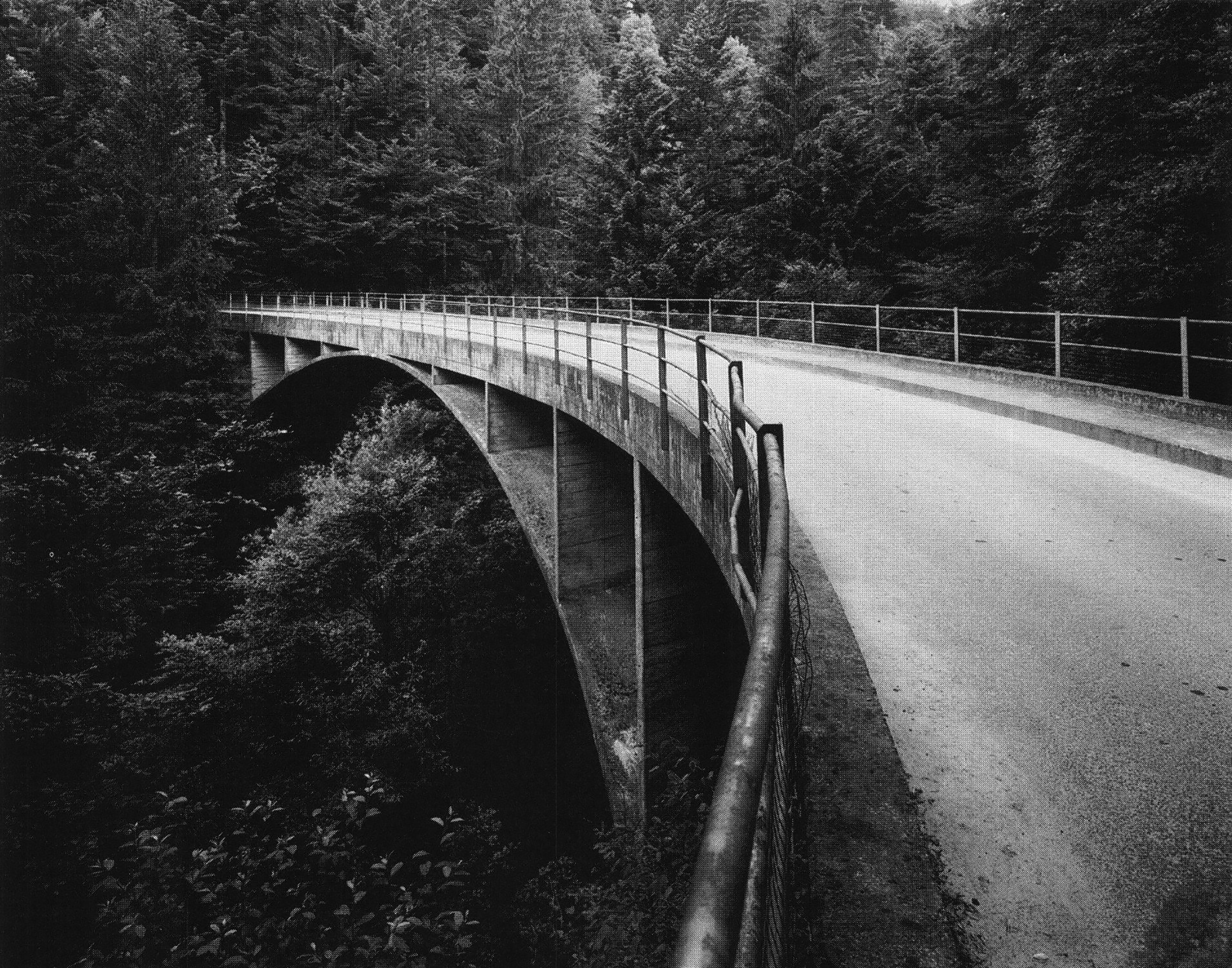
Lieu: Rüeggisberg, Switzerland
Type: Pont
Material: Reinforced concrete
Structure: Deck-stiffened Arch Bridge
Total Length: 37 metres
Photography: ETH Library
Text: Wikipedia
Publié: Décembre 2017
Catégorie: Architecture